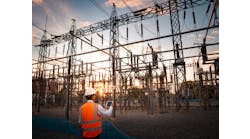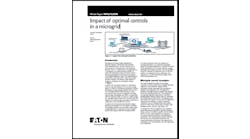Fit for the Future: Hamburg’s Hydrogen Fueled Combined Heat and Power Plant
INNIO, an Austria-based energy solutions provider, has teamed up with HansWerk AG, a German energy service provider, to deliver a 1 MW hydrogen fueled combined heat and power (CHP) pilot plant in the center of Hamburg, Germany.
The pilot will demonstrate readiness for a green gas grid by running the grid-connected gas fired CHP plant with increasing levels of hydrogen, up to 100%, to test its flexibility. The project will also show that existing CHP plants can be modified for green fuel mixes and aid Hamburg’s goal of providing customers with green hydrogen — hydrogen produced by electrolysis powered with renewable electricity — by 2035.
“The project replaces an existing boiler installation where they are supplying heat to a shopping mall, some office buildings, and a small residential complex,” Carl Richers, vice president – product management and marketing at INNIO, told Microgrid Knowledge.
Converting existing CHP
The possibility of converting existing gas fired CHPs to hydrogen will be demonstrated by installing a CHP designed to run on natural gas.
“After we’ve done the conversion, it will have technology on the engine that will enable 100% hydrogen operation…We’ll change the controls, we’ll change the fuel and air mixing,” Richers explained.
The hydrogen supply will come from Northern Germany, where an abundance of wind makes using electricity to power electrolysis and produce hydrogen an attractive energy storage option. But the future fuel mix is uncertain.
“It could be biomethane, it could be synthetic methane…That’s why we want to demonstrate that all of these different options are possible for us and that we can use the installed base with reasonable modifications to run on whatever the future gas mix will be,” Richers explained.
100% hydrogen fueled
This will be INNIO’s first 100% hydrogen fueled CHP, but the organization has run engines on other gases.
“We have a long history of running our engines on special gases such as wood gas, syngas, coke gas, steel gases, and so on which all have high hydrogen content already,” Richers said.
Since 2008, the company has also been running a project in Argentina, blending up to 40% hydrogen by volume into the fuel mix. These units have wracked up over 70,000 operating hours.
Global relevance
The challenge of switching from fossil to intermittent renewable energy in an economic way is global. Richers said that using as much of the existing infrastructure as possible will aid this.
Hydrogen, acting as a chemical energy store, is an option for dealing with the intermittency of renewables.
“The question is how do we then reconvert this chemically stored energy into electricity and heat,” Richers asked.
“I think it makes sense to do cogeneration because that will be the most efficient use of this very valuable resource because it’s going to more expensive than current fossil fuels… That’s why we believe CHP will be the right approach.”
For a deep dive into microgrid innovations join us at Microgrid 2020 June 2-3 in Philadelphia, Pa. Register by January 31 for early bird discounts.







